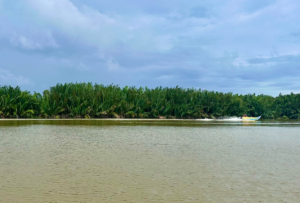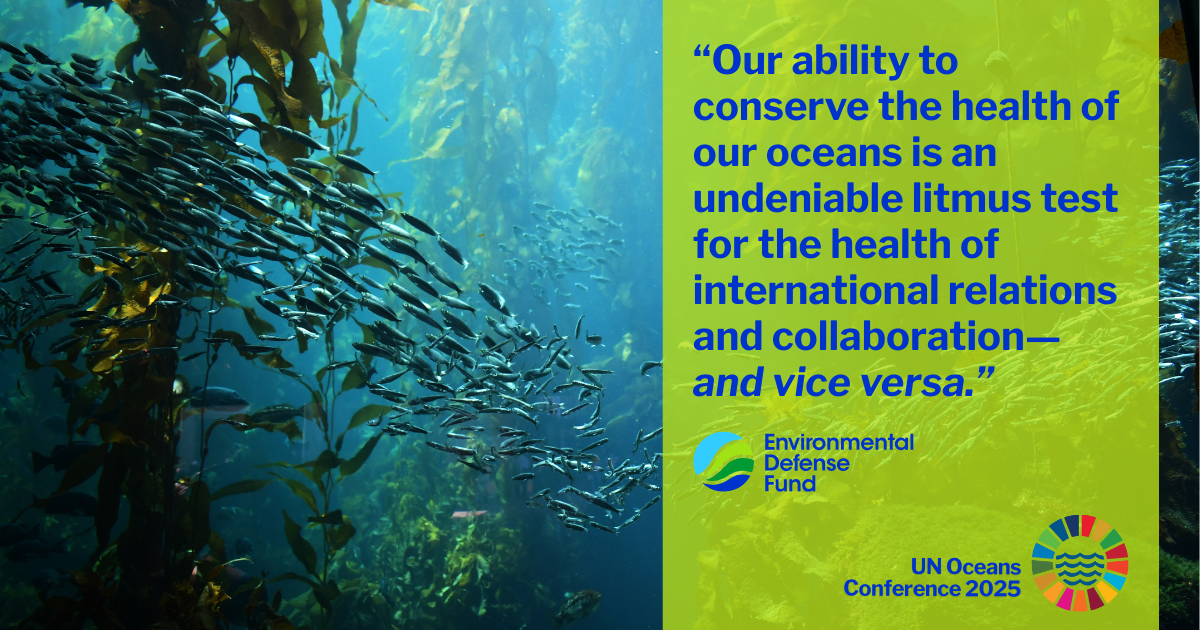
The Global Biodiversity Framework in practice: Aligning Marine Protected Area and Fisheries Management in Indonesia
By: Abdul Halim1, Amehr Hakim2, Gemma Carroll3, and Annie Mark4
In just a few weeks, on October 21st, 2024, delegations from 196 countries party to the Convention on Biological Diversity (CBD) will come together for its 16th Conference of Parties (COP16) in Cali, Colombia, to review progress, set priorities and commit to new workplans to tackle biodiversity loss and safeguard nature and the well-being of people around the world.
This will be the first meeting to review international progress on implementing the historic Kunming-Montréal Global Biodiversity Framework (the “Biodiversity Plan”) adopted in December 2022 at COP15. The Biodiversity Plan aims to halter and reverse biodiversity loss by 2050, setting out a global vision for a world living in harmony with nature. Among the biodiversity targets laid out in the Biodiversity Plan is the so-called “30×30” Target. Parties committed to conserving at least 30% of terrestrial, inland water, coastal and marine areas by 2030, through ecologically representative, well-connected and equitably governed systems of protected areas and other effective area-based conservation measures that recognize Indigenous and traditional territories and systems of environmental stewardship.
As part of its commitment to meeting this target, the Indonesian Ministry of Marine Affairs and Fisheries (MMAF) has adopted the Indonesia Marine Conservation Vision to designate 30% of its coastal and marine waters for conservation by 2045. For Indonesia, the 2045 timeline is more achievable than 2030 and aligns with the celebration of the nation’s centennial anniversary. Under the government’s commitment, 97.5 million hectares of coastal and marine waters will be designated for conservation areas, providing substantial new protections in the Coral Triangle region—the global epicenter of marine biodiversity and a source of protein and livelihoods for more than 120 million people.
Equally important to committing to marine protected areas (MPAs) is ensuring that designated protected areas are effectively managed. This is critical to ensure that protected areas effectively protect biodiversity and that communities benefit from sustainable livelihoods, including tourism and environmentally responsible fishing. While most MPAs are optimized for biodiversity conservation and eco-tourism, many fail to account for sustainable fishing activities. This gap overlooks the critical role that fisheries play in Indonesia in preserving traditional practices, providing jobs and income, and feeding the population.
This sentiment is shared by communities living in Indonesia’s coastal villages. In an evening villagers’ gathering in Kambala Village of Kaimana in West Papua Province of Indonesia in August 2018, Pak Abu Uriepa, a religious leader of the village expressed his concern that the established MPA in Kaimana has primarily been focusing on protecting habitats and promoting tourism, with little consideration for improving the economic well-being of local people. Due to limited accessibility, tourism has not yet increased in Kaimana, and coastal communities are still highly dependent on fishing for their livelihoods.
In response to this need, in early 2023 MMAF established the Way Kambas Marine Protected Area on the east coast of Lampung Province, the first MPA in Indonesia to feature a “core zone” specifically for protecting sensitive habitats, critical for the lifecycle of Blue Swimming Crabs (BSC). This new reserve is located within the Blue Swimming Crab (BSC) Fisheries Management Area (FMA), which is designed to increase the health and productivity of the BSC fishery.
By explicitly integrating conservation and sustainable fishing goals, the Way Kambas reserve could, if successfully implemented, serve as an important and replicable example of how MPAs and FMAs can be aligned and co-managed to achieve the twin goals of biodiversity protection and small-scale commercial fishery sustainability. EDF is pleased to work with the Lampung Provincial government, local communities and other stakeholders to pilot the implementation of MPA and FMA integration on the ground in Lampung.
Momentum for similar efforts to effectively manage MPAs alongside sustainable fisheries is gaining traction in other Indonesian provinces. The North Maluku provincial government is about to revise and improve the efficacy of the Governor Regulation that defines the local grouper and snapper action plan that incorporates MPAs as a fisheries management tool. This would open more opportunities to pilot the integration of MPA and fisheries to address biodiversity loss, safeguard nature, and contribute to the well-being of people in the Coral Triangle.
We applaud the efforts of the Indonesian government to promote the explicit integration of MPA and FMA governance and management to simultaneously achieve the triple bottom line of sustainability goals that are ecologically sound, economically viable and socially acceptable, in-line with the targets of the CBD Biodiversity Plan. With this approach, we believe that the concerns of local communities for greater economic empowerment and food security, like those expressed in Kambala village, will be properly addressed as Indonesia takes action to achieve its biodiversity protection goals.
1 Environmental Defense Fund, Climate Resilient Fisheries and Oceans, Indonesia.
2 Ministry of Marine Affairs and Fisheries of the Republic of Indonesia, Jakarta.
3 Environmental Defense Fund, Oceans and Climate Scientist, Australia.
4 Environmental Defense Fund, Global Partnerships, Germany.












